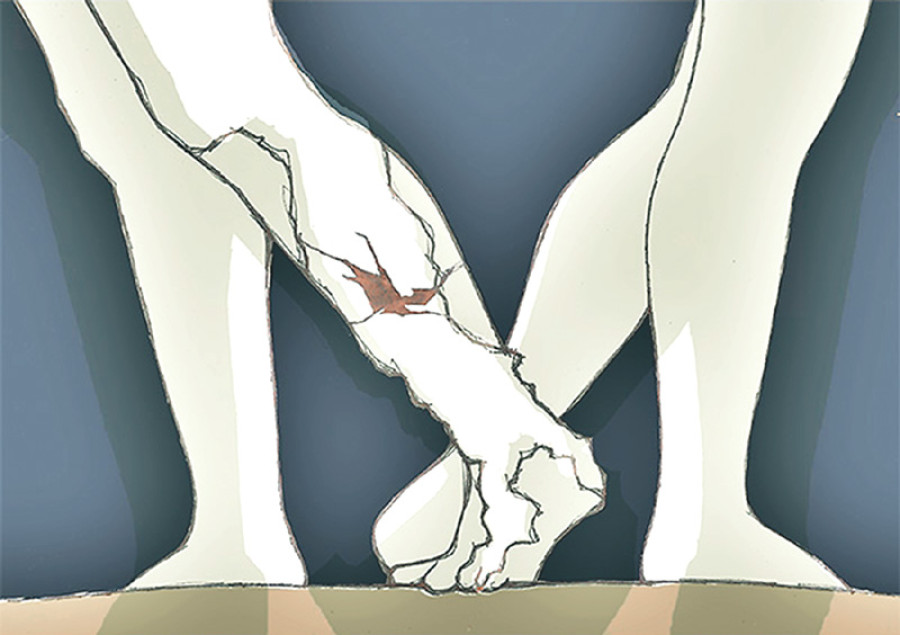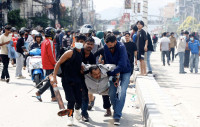Opinion
Dissected development
Post-earthquake recovery efforts need to be consolidated for greater effectiveness
Sudeep Uprety
Last year’s earthquake resulted in severe damage to the lives and property of the Nepali people. The disaster also triggered emergency and long-term response actions by various development partners to lift the country from the rubble. The Ministry of Finance has introduced an Aid Management Platform to keep track of all the funds coming to Nepal in the name of aid support. As the international community has made massive commitments, the ministry has developed a separate Post-Earthquake Assistance Portal under the platform. According to the portal, the international community has pledged about $1,600 million of which $412 million has been disbursed. Given the large scale of funding support provided by various development partners, several projects are currently ongoing, especially in the 14 most affected districts.
Development gets ‘dissected’ when support is provided in bits and pieces instead of in an integrated manner to produce
substantial success. Distributing a limited support package among 100 households in a certain VDC in a district does not ensure the recovery and rehabilitation of the quake affected. Moreover, there are also chances of duplication of interventions and support packages, and therefore, the aid received might not be well utilised for the betterment of the intended beneficiaries.
An example
According to the Post-Earthquake Assistance Portal, 35 projects are currently operating in Sindhupalchok district in the name of post-earthquake assistance. The projects are related to helping earthquake affected livestock; water, sanitation and hygiene (WASH) management; education; child protection; distribution of shelter materials; diarrhoea and pneumonia management; livelihood of farmers; disaster risk management; family planning counselling and services; construction of primary health care centres and housing reconstruction, among others.
In terms of broader intervention sectors, most of the aid support has been directed at local development (35 percent), followed by urban development (19 percent), economic reform (10 percent) and education (9 percent), among others. As these varied support services are being distributed over an entire district, obviously the support packages will be spread thinly among the beneficiaries, and therefore, the real motive of recovery and reconstruction will be difficult to achieve.
Moreover, the cost-effectiveness of the aid support received also needs to be examined. A total of $793,422,766 worth of aid support has been committed through 35 projects in Sindhupalchok. Since these projects were carried out by various organisations, coordination among the partners has become an issue. The subject of aid harmonisation, which means making the aid support more effective, integrated and consolidated, has been raised several times; but it does not seem to have been effective at the ground level.
At the same time, regularisation by the government at the central, regional and district levels has not happened either. There is a financial monitoring mechanism under the Aid Management Platform to keep track of the aid received. However, in terms of the technical progress made by these projects, there is no provision for their consolidated monitoring and evaluation. There is a practice of the line ministries supervising the work conducted by these agencies through ‘monitoring visits’. However, this is not institutionalised practice and is mostly conducted on an ad hoc basis.
Sustainable solutions
Post-earthquake emergency management and recovery, given the nature of the complexities and challenges involved, is a painstaking process. We cannot discount the efforts made by the international community as the commitments totalling $1,600 million made during a time of dire necessity for Nepal need to be well appreciated. However, the optimum utilisation of the aid received needs to be ensured. Consolidation of the efforts is key here. As development partners will have their own distinct priority sectors and modalities of intervention and target groups, it is difficult to envisage a blanket national recovery programme. However, efforts could be made to ensure that the government is well informed about the interventions and the progress made. Of course, all the organisations produce progress reports; but government officials, given their work load and other engagements, might not be too eager to go through all the reports to stay abreast of their activities.
Given this context, a Post-Earthquake Recovery Knowledge Management Platform (like the Aid Management Platform) can be established to synthesise all the post-earthquake emergency management and recovery efforts in a very plain and short format with interactive data visualisation tools. This can be done at the central government level, probably through the National Planning Commission or similar other agencies. Such a platform will allow policymakers and relevant line ministry officials to stay informed about the progress of the projects on a real time basis for necessary policy interventions. It will also maintain transparency for civil society, the media and the general public and help to build more trust and credibility. The ‘dissected’ development approach is only a quick-fix solution, like stitching the wounds of the quake affected. It is time to seek more sustainable solutions.
Uprety, a development communications professional, is associated with Health Research and Social Development Forum, a Kathmandu-based NGO




 11.12°C Kathmandu
11.12°C Kathmandu










